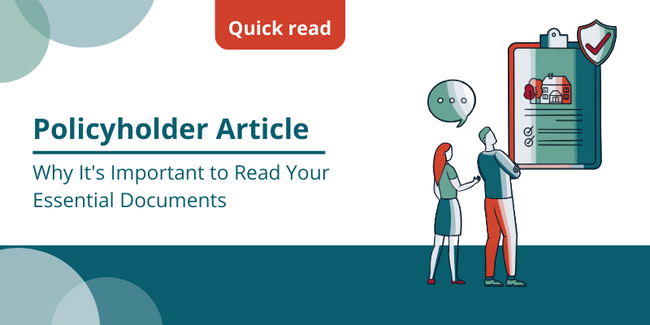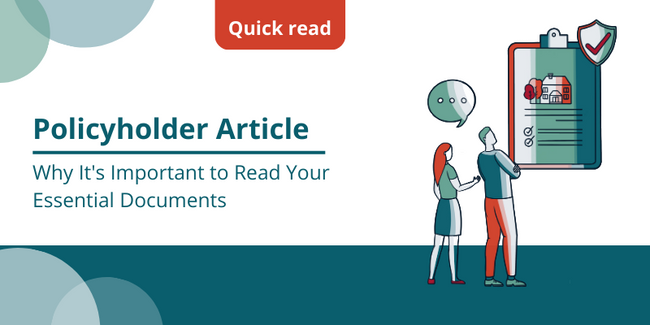Exercitation ullamco laboris nis aliquip sed conseqrure dolorn repreh deris ptate velit ecepteur duis.
Get in touch
- Source Insurance, Global Reach, Cardiff, CF11 0SN
- [email protected]
- 02920 265265
- Monday to Friday: 8.30am to 5pm
- Source Insurance, Global Reach, Cardiff, CF11 0SN
- Support 02920 265265
Why It’s Always Important to Read Your Essential Documents
-
Source Insurance > Blog > Source Team > News > Why It’s Always Important to Read Your Essential Documents
 Home Insurance
Home Insurance
As a home insurance policyholder, it’s easy to assume that once your policy is live, the process of setting up your insurance cover is complete. However, checking your essential documents (once you have them) is vital to ensure that the information is correct.
What are Essential Documents?
Firstly, we’ll take you through a quick overview of essential documents and their purpose.
They typically come in two forms, Electronic Documents, (Commonly referred to as eDocs and traditional physical printed copies). Source will let you choose which one you’d prefer when setting up your policy, but you can switch anytime.
Your essential documents will contain the information you need about the features and exclusions of your cover. This includes automatic and additional cover that either you or your broker may have added during the quotation process.
Not currently using eDocs? To find out about switching to electronic documents, we recommend looking at our webpage here.
Why You Should Read Your Essential Documents
To Understand Your Insurance
You must know what’s covered under your home protection to understand when to make a claim. By reading your essential documents, you can see everything covered under your policy in a simple format, making it easier to visualise what’s insured and what isn’t.
Insurance documentation traditionally uses jargon that can be confusing. We have created a jargon buster to support you in understanding some of the more complex terminology in your documents. Take a look here to discover more for yourself!
Policy Terms and Limits
You equally need to know what’s excluded from your insurance policy to have a clear picture of what the insurer is willing to cover in the event of a claim. You must check the endorsements listed on your policy to ensure you are aware of any policy terms and limits that may apply.
Making Changes and Amendments
If there is something that you can see needs to be added to your policy or your situation has changed, you’ll need to make a change to your cover. With Source, you can make unlimited changes with no admin fee. So, if your policy needs amending, you can do so without hassle.
Excesses
You’ll be aware of excesses if you’ve taken out insurance before. These are split into two formats voluntary and compulsory.
A compulsory excess is a fixed amount imposed by the insurer. Compulsory excess is set, so this is not something you are able to change.
A voluntary excess allows you to select the amount you are happy to contribute towards a claim. The higher the figure you choose, the cheaper your insurance policy may be. However, this money will be financed by you in the event of a claim. This is an additional amount to the compulsory excess (If applicable) set by your insurer.
Policy Renewals
Your cover lasts for 12 months, Source will contact you by your selected format (Electronic Documents or Postal) one month before the end of that period. This is the renewal of your policy which will include the renewal price for the next period and advise of any changes imposed by the insurer.
Renewal is a good opportunity to review your documents, make any potential changes and evaluate whether the policy still meets your needs.
The Claims Procedure
Your essential documents outline the procedures and requirements for filing a claim with your insurer. By familiarising yourself with these procedures in advance, you can ensure you have all the necessary information readily available should the event arise.
If you need to make a claim or have a query you need answered, be sure to get in touch with us at 029 20 265265. Alternatively, contact us via LiveChat through our website. Follow our Facebook page here for the latest updates.


Recent Comments